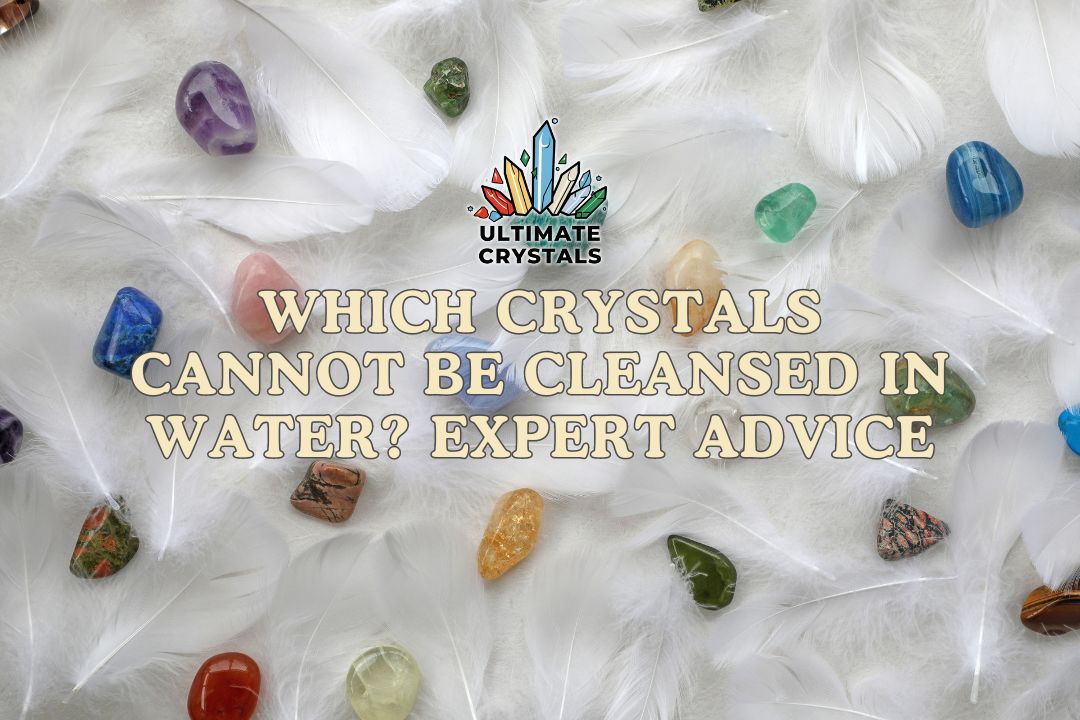Which Crystals Cannot Be Cleansed in Water? Crystals have been revered for centuries as a source of healing energy, and many people use them to promote physical health, emotional well-being, and spiritual growth. One of the most important practices in working with crystals is cleansing them regularly to remove any negative energy they may have absorbed.
While water is a popular method of crystal cleansing, it’s important to note that not all crystals are safe to be cleansed in water, such as gemstones. In this blog post, we’ll dive into the details of crystal cleansing and specifically focus on which crystals are not suitable for water cleansing. We’ll explore alternative methods of crystal cleansing and discuss the pros and cons of each. Additionally, we’ll provide expert tips for safely and effectively cleansing your crystals so that you can continue to benefit from their positive energy.
Embracing the Wisdom of Crystal Cleansing: Essential Principles Unveiled
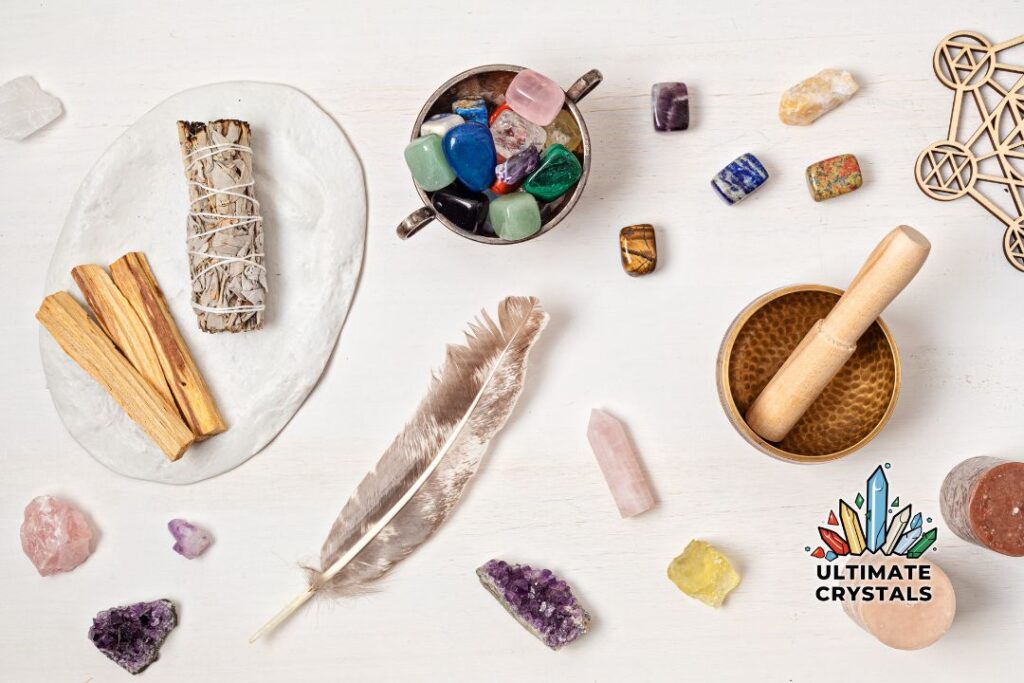
Embracing the ancient ritual of crystal cleansing involves removing negativity and recharging their energy. Align with the moon’s feminine energy during a full moon, purify with sage, or use sound healing with tuning forks. Crystals used for healing should be cleansed to release absorbed negative energy. Embrace the wisdom of turquoise crystal cleansing.
Why Cleansing Your Crystals is Important?
Cleansing crystals is crucial for maintaining their energetic clarity and purpose. Regular cleansing prevents the build-up of negative energy, ensuring that the crystals maintain their vibrational frequency. By purifying them, you enhance their healing properties and promote positive energy flow. Amplify their potential by keeping them energetically clear.
Common Methods of Crystal Cleansing
- Smudging with sage has been used for centuries to purify crystals and sacred spaces.
- Placing crystals on a bed of rock salt can draw out negative energy and recharge their energy.
- Sound healing using tuning forks clears the energy of crystals.
- Sunlight and moonlight exposure are also effective.
The Role of Water in Crystal Cleansing
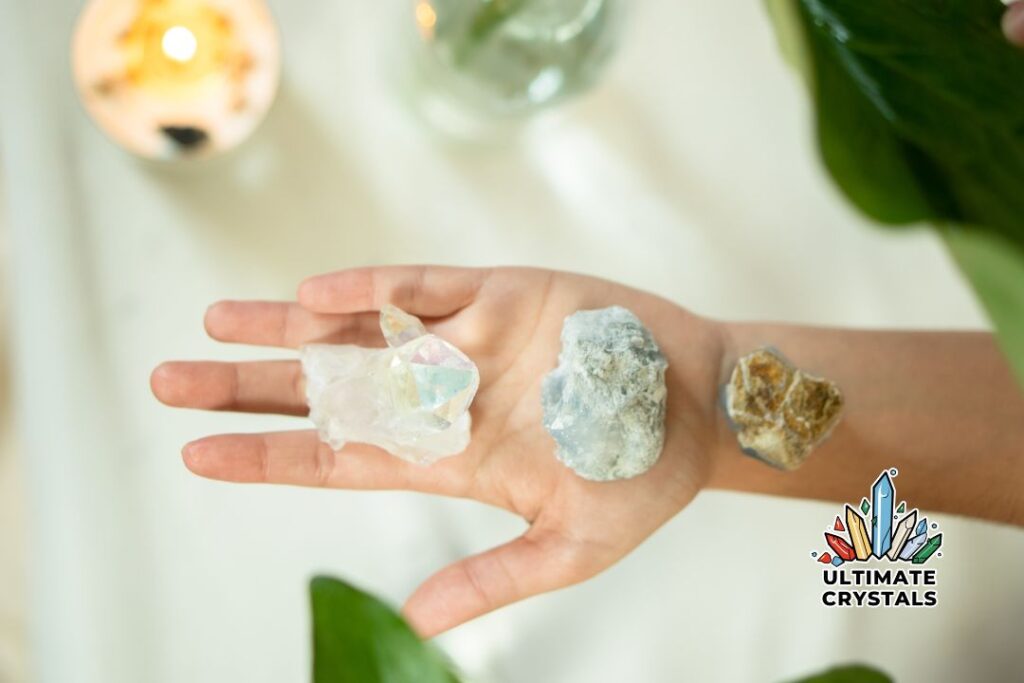
Water, with its energy-resetting ability, is a gentle, non-invasive means of clearing crystals. Immersing them in water or a salt solution can release negative energy and recharge their healing properties. This method is ideal for sensitive stones like lepidolite, which is vulnerable to scratches and fractures, and helps them renew their vibrational frequency. Water holds the moon’s feminine energy, perfect for crystal cleansing.
Benefits of Water Cleansing for Crystals
- When using water cleansing for crystals, the natural energy is restored, purifying and allowing effective healing energy emission.
- Negative energy is dissolved and washed away, leaving the crystals feeling refreshed.
- This simple method benefits a wide variety of crystals by clearing any stagnant or negative energy they may have absorbed.
Risks Associated with Water Cleansing for Crystals
Submerging water-sensitive crystals in water can lead to physical damage, causing them to erode, dissolve, or lose their natural luster. Certain crystals, like labradorite, are particularly susceptible and can even crack when exposed to water. This can negatively impact the appearance and energy of the crystals, so it’s important to be cautious when using water for cleansing purposes.
Key Factors That Determine If A Crystal Is Suitable For Water Cleansing
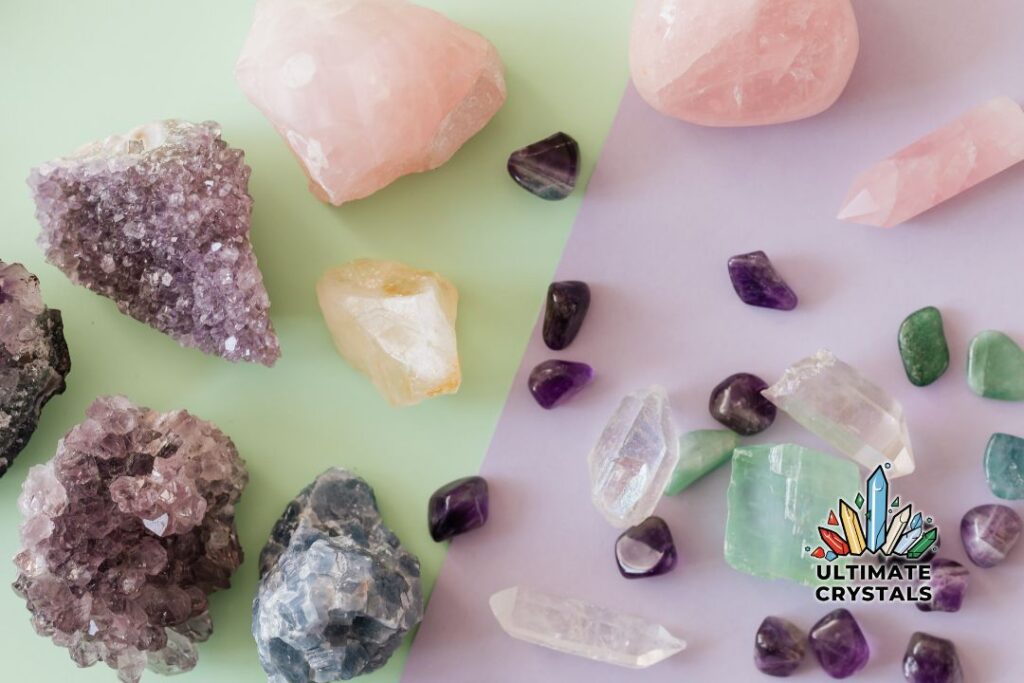
Understanding a crystal’s composition and structure is crucial in deciding its suitability for water cleansing. The hardness of a crystal plays a significant role, as does its porosity and solubility in water. Evaluating these factors ensures that only compatible crystals are cleansed using this method.
Crystal Composition and Structure
When exposed to water, crystals with high iron content, such as hematite, may rust or corrode. The structural integrity of crystals, especially those with high copper content, can be impacted by water. Additionally, specific crystal compositions, like halite, can be compromised by the presence of water.
Hardness of the crystal
When selecting crystals for water cleansing, it’s essential to consider the hardness of the crystal. Crystals with low hardness ratings on the Mohs scale are susceptible to damage when exposed to water. Soft crystals like talc and gypsum can erode over time, making them unsuitable for water cleansing.
Porosity and Solubility in Water
Porous crystals, like azurite, can absorb water, risking structural damage. High solubility crystals, e.g., halite, shouldn’t be water cleansed due to dissolution risks. The porosity and solubility of crystals play a crucial role in determining their suitability for water cleansing.
Which Crystals Cannot Be Cleansed In Water?
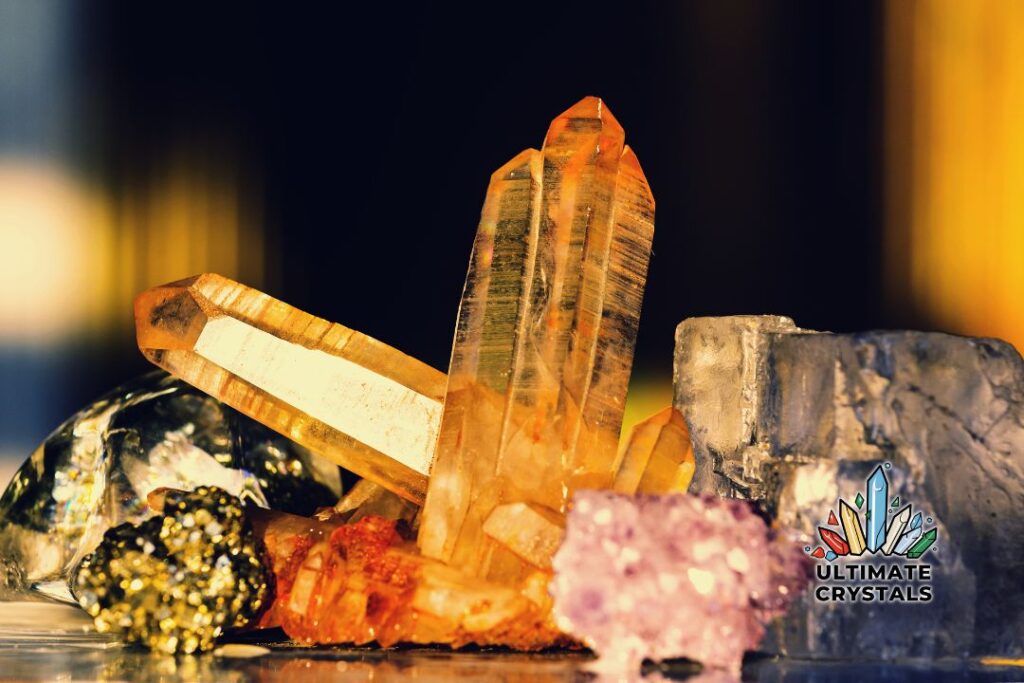
Identifying crystals that are sensitive to water is crucial for their proper care. These crystals should not be cleansed in water to avoid damage. Selenite is one such crystal that requires alternative cleansing methods to preserve its integrity.
Identifying and Understanding Water-Sensitive Crystals
When cleansing crystals, it’s crucial to recognize water-sensitive ones like selenite, prone to degradation in water. Similarly, high salt content crystals like halite are at risk in water. Understanding a crystal’s water tolerance is essential for safe cleansing practices. Embracing the wisdom of crystal care requires this foundational knowledge.
Selenite: Why It Shouldn’t Be Cleansed in Water
Selenite, with its high water solubility, is vulnerable to damage from water exposure, leading to structural changes and a loss of natural energy and beauty. Cleansing it in water can compromise its healing properties, making it unsuitable for water cleansing. Understanding selenite’s characteristics is crucial for its proper care and maintenance.
The Case of Pyrite: A Crystal Not to Be Water Cleansed
Pyrite, with its high iron content, is unsuitable for water cleansing, as the water can cause it to rust. Its negative energy is better cleared with smudging or sound healing. Additionally, being a harder crystal, pyrite may be adversely affected by water tolerance. Thus, it’s crucial to avoid water cleansing pyrite due to its iron ore content.
Understanding the Risk with Desert Rose Selenite
Desert Rose Selenite’s delicate structure makes it unsuitable for water cleansing. Its fragility can be damaged by water, jeopardizing its intricate formation. Selenite’s salt water tolerance excludes Desert Rose Selenite, emphasizing its intolerance to water cleansing. Avoid water cleaning to maintain the crystal’s integrity and positive energy.
Alternatives to Water Cleansing for Crystals
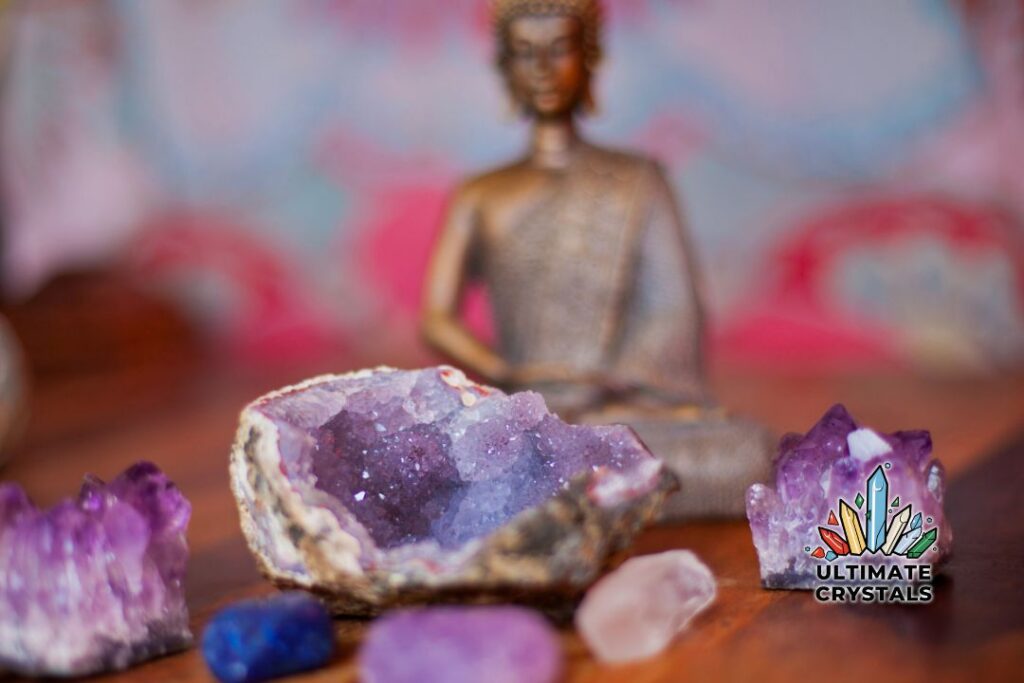
When cleansing crystals, it’s important to consider alternatives to water cleansing, as some crystals can dissolve or become damaged when exposed to water. Methods such as smudging, sound healing, and using a bed of salt or herbs can be effective. Researching the best cleansing method for each crystal type is crucial to avoid damage. Crystals can also be charged with intention and energy, eliminating the need for cleansing.
Smudging: A Dry Method of Cleansing Crystals
Smudging, a dry method of cleansing crystals, is ideal for water-sensitive crystals to avoid damage. Utilizing sage or other herbs, smudging involves passing the smoke over the crystals for purification. This technique also extends to cleansing one’s energy and surroundings. It’s essential to research the most suitable cleansing methods for specific crystal types.
Moonlight: A Gentle, Non-Invasive Cleansing Method
When water isn’t safe, moonlight offers a non-invasive alternative. Some crystals dissolve in water, but moonlight can safely reset their energy. The night of a full moon is ideal for recharging crystals like tangerine quartz, snow quartz, and more. It’s a gentle method that respects the moon’s feminine energy.
Sound Healing: An Unconventional yet Effective Cleansing Technique
Sound healing offers a powerful alternative to water cleansing for crystals. Vibrations from singing bowls and tuning forks can cleanse and balance energy fields, promoting relaxation and healing. This unconventional method is effective and has long-lasting benefits for physical and emotional well-being. Embrace the transformative power of sound healing, where the key and pitch of the sound are not as important as the loudness of the vibrations that envelop the stone, in your crystal cleansing routine.
The Pros and Cons of Different Cleansing Methods
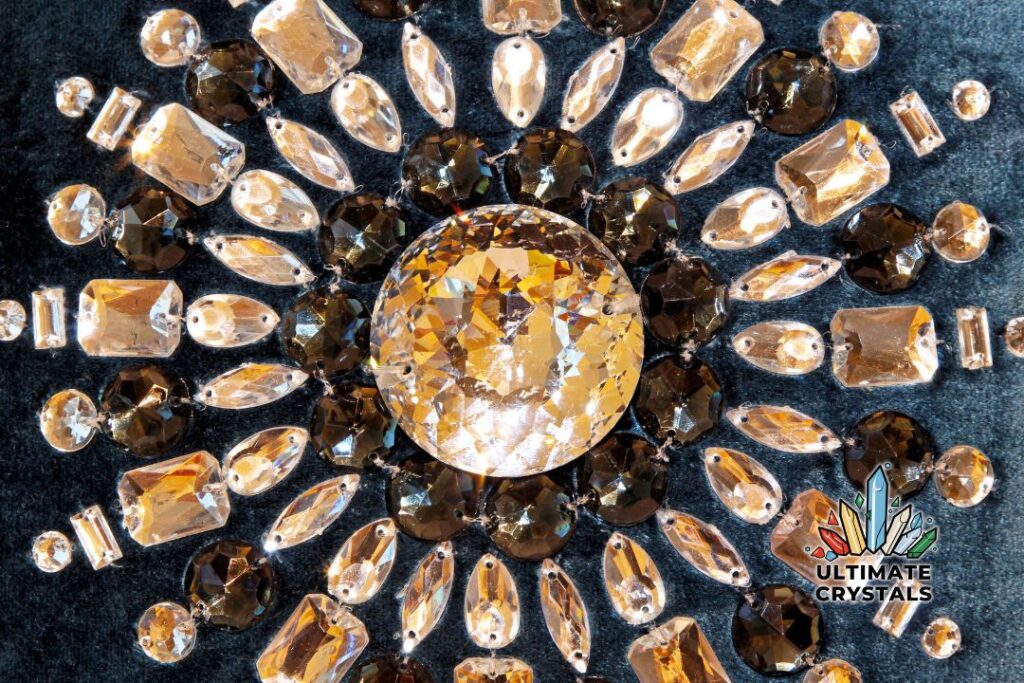
When considering cleansing methods, it’s essential to note that some crystals, like selenite and malachite, are unsuitable for water cleansing. Smoke cleansing with sage or palo santo can be effective, but not ideal for those with respiratory issues. Sunlight and moonlight cleansing have benefits, yet direct sunlight may fade or crack some crystals. Sound cleansing with singing bowls is a gentle and effective option. It’s crucial to research each crystal’s properties before choosing a method.
Comparing Water Cleansing to Alternative Cleansing Methods
When it comes to cleansing your crystals, it’s important to consider the pros and cons of each method. In this article, we’ll compare water cleansing to alternative methods using a two-column bullet point format.
Water Cleansing:
Pros:
- Easy and convenient
- Can be done quickly
- Can be done with tap water
Cons:
- Not suitable for all crystals
- May damage or dissolve certain crystals
- May not be effective for deeply ingrained negative energy
Alternative Methods:
Pros:
- Easy and convenient
- Can be done quickly
- Can be done with tap water
Cons:
- Not suitable for all crystals
- May damage or dissolve certain crystals
- May not be effective for deeply ingrained negative energy
Smudging:
Pros:
- Effective for removing negative energy
- Can be done indoors or outdoors
- Safe for all crystals
Cons:
- Requires materials such as sage or palo santo
- Can be time-consuming
Sunlight and Moonlight:
Pros:
- No extra materials needed
- Safe for all crystals
- Can be done easily
Cons:
- May take longer than other methods
- Not effective for removing deeply ingrained negative energy
It’s important to research and choose the best method for each crystal to avoid damage or harm. By comparing the pros and cons of each method, you can make an informed decision and ensure that your crystals are cleansed safely and effectively.
Choosing the Right Crystal Cleansing Method
When considering the best way to cleanse your crystals, it’s essential to be mindful of their individual needs. Some crystals, like selenite and malachite, are sensitive to water and can be damaged over time. Instead, consider alternatives such as smudging with sage, using moonlight, or incorporating meditation with Desert Rose Selenite for a gentle, non-invasive cleansing method.
Expert Tips for Safely and Effectively Cleansing Your Crystals
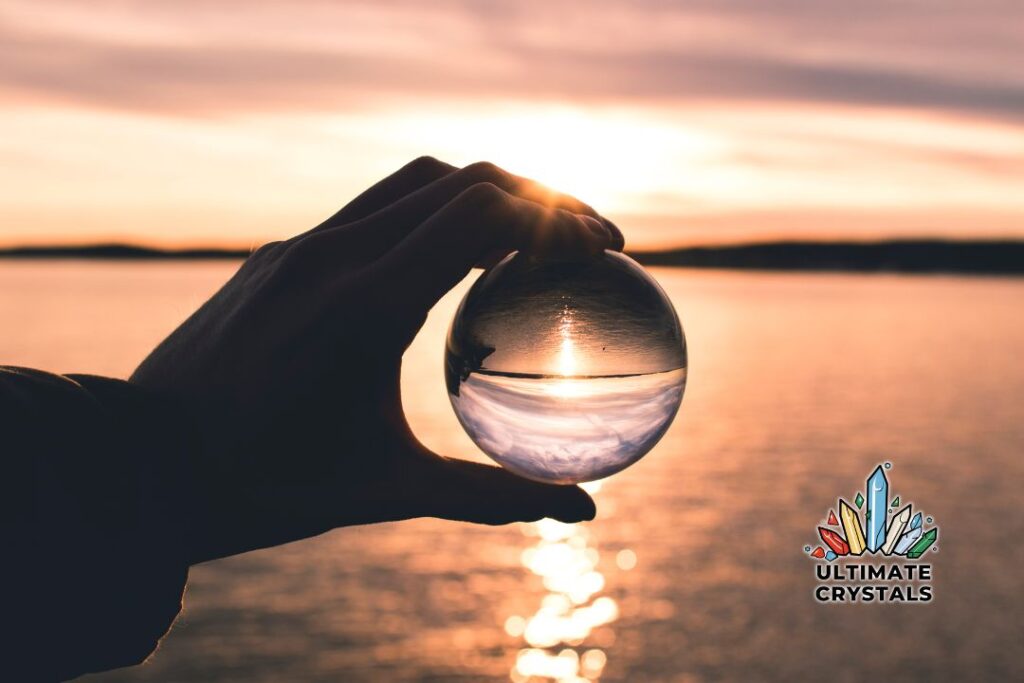
When considering cleansing methods, it’s essential to understand the mohs hardness scale and the water signs of pisces. Tangerine quartz or smaller crystals like snow quartz are better suited for dry cleansing methods. The moon’s feminine energy during a full moon night can enhance the process, amplifying the crystal’s properties. Indigenous people have long used moonlight and sound vibrations for crystal cleansing, including those with the water sign of scorpio.
Ensuring Your Crystals are Properly Cleansed and Charged
Ensuring your crystals maintain their positive energy is crucial. Various methods, like sound healing or smudging with sage, can cleanse them. Charging crystals under a full moon enhances their energy, and recharging them regularly is essential, especially after extended use. Placing crystals under moonlight on a windowsill can also help recharge them.
What Happens if a Non-Water-Safe Crystal Accidentally Comes in Contact with Water?
When a non-water-safe crystal comes into contact with water, it can be damaged or have its appearance and energy affected. Crystals such as selenite, halite, malachite, and those with high iron content like hematite are particularly sensitive to water. Water exposure can alter their structure and even lead to the formation of new substances on their surface. Moonstone, while safe in water, can also be affected by extreme temperatures.
Frequently Asked Questions
What gems can you not put in water?
Some crystals, such as selenite, malachite, pyrite, and halite, should not be put in water. Selenite dissolves in water, while malachite and pyrite may be toxic when in contact with water. Halite (rock salt) will lose its crystalline structure when it comes in contact with water. Other gems that should not be cleansed in water include amber, which can become brittle and lose its shine, and opal, which can crack or lose its color. It’s crucial to research each crystal’s properties before using them.
Are some crystals toxic in water?
Certain crystals can be toxic when submerged in water. It’s important to be cautious when using crystals for water cleansing. Examples of crystals that should not be placed in water include malachite, pyrite, and selenite. Always research a crystal’s properties before using it for water cleansing.
What crystals should not be together?
Certain crystals should not be combined due to their conflicting energies and properties. For instance, Amethyst and Citrine should not be placed together as they have opposing effects on the body. Another example is Selenite and Black Tourmaline, as their energies can cancel each other out. It’s crucial to research and understand each crystal’s properties before combining them.
Which crystals cannot be cleansed in salt water, you ask?
Certain crystals, such as selenite, malachite, and pyrite, should not be cleansed in salt water due to their porous nature. Lapis lazuli and hematite are also among the crystals that should be avoided. Instead, try alternative methods like moonlight or sunlight cleansing.
Why can’t we cleanse some crystals in water, and what happens if they get wet?
Certain crystals cannot be cleansed in water due to their composition and structure. Crystals like Selenite, Halite, and Malachite are examples of water-sensitive crystals that can dissolve, rust, or become damaged when exposed to water and toxins. When wet, some crystals may also lose their color or luster, diminishing their visual appeal. It is important to research the appropriate cleaning method for each crystal to avoid any potential damage.
Is there a way to reverse water damage to a crystal?
If water damage has occurred to a crystal, there are steps you can take to reverse it. Gently dry the crystal with a soft cloth and place it in sunlight for a few hours. Avoid extreme temperature changes or harsh chemicals, and consider consulting a professional crystal healer for advice if the damage is severe.
What healing crystals can be recharged in salt water?
Certain healing crystals can be safely recharged in salt water. Popular options include clear quartz, amethyst, and citrine. To recharge these crystals, you can place them in a bowl of salt water overnight and rinse them with fresh water in the morning. However, it’s important to research each crystal’s properties before attempting any cleansing or recharging methods.
Is polished rose quartz safe to put in water?
Polished rose quartz is not safe to put in water. These crystals can contain chemicals from the polishing process that may leach into the water. Additionally, some crystals may dissolve or break apart when exposed to water. It’s important to research which crystals are safe for water cleansing purposes.
Are Crystal Elixirs or Gem water toxic?
Certain crystals, such as malachite, pyrite, and hematite, are toxic and should not be used in crystal elixirs or gem water. It is crucial to research a crystal’s properties before using it in water cleansing. Always exercise caution and consult a healthcare professional before consuming crystal elixirs.
How often should I cleanse my crystals?
The frequency of crystal cleansing depends on usage and energy absorption. Some suggest weekly or monthly cleansing, while others cleanse as needed. Methods include smudging, sunlight/moonlight exposure, salt burying, and sound vibrations. Avoid water cleansing certain crystals like selenite and malachite to prevent dissolution or deterioration.
Conclusion and final thoughts
In conclusion, it is crucial to understand which crystals are suitable for water cleansing and which are not. While water cleansing can be a beneficial and effective method for purifying crystals, certain crystals are sensitive to water and can be damaged or dissolved. Crystals like Selenite, Pyrite, and Desert Rose Selenite should never be cleansed in water due to their composition and structure.
However, there are alternative methods available such as smudging, moonlight cleansing, and sound healing that can safely cleanse your crystals without the risk of damage. It is important to choose the right cleansing method based on the specific needs of your crystals. Remember to always ensure your crystals are properly cleansed and charged to maximize their energy and benefits.

